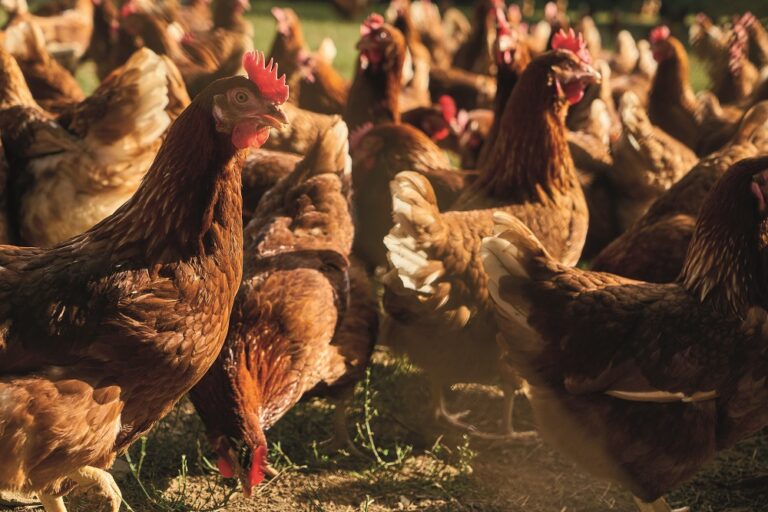Salmonella control should not drop off the radar despite tight margins
Alongside egg market challenges, the importance of Salmonella was the hot topic of conversation at Elanco’s Layer Conference, where producers were told cases of regulated and non-regulated serovars reported from 2018 to 2020 had risen by approximately 50% compared to 2013 to 2017.
Elanco’s Layer Conference, held in conjunction with Rosehill at the West Midlands Shooting Ground, welcomed attendees from across the poultry sector and featured presentations from industry experts about the global egg industry, updates on Salmonella, and a briefing on the latest vaccine research.
While Salmonella was the key focus at the conference, global finance expert Nan-Dirk Mulder, from Rabobank, kicked off proceedings by providing an update on the challenges and opportunities for the global egg market.
“Despite recent challenges, egg production is looking more profitable, with egg prices rising and feed prices falling,” said Mulder.
“Although there are clear differences in the prices paid between contracts, the main difference between the most and least profitable farms is down to how producers manage their flocks.”
Mulder said producers can take control by focusing on strong procurement, feed formulation, energy, and labour efficiency, as well as stringent biosecurity measures – all of which will help to reduce infections, and ensure a healthy, profitable flock.
Salmonella prevalence
Shaun Cawthraw, from the Animal Plant and Health Agency (APHA), shared the latest data on UK Salmonella cases.
“The rise in Salmonella cases has mainly been seen in broilers, and it’s potentially linked to the ban on formaldehyde-based products in animal feed production,” he said.
“Although the level of Salmonella is relatively low in layers, there’s the possibility that cases could rise without the correct management, so it’s important producers keep their finger on the pulse.”
Cawthraw said non-regulated serovars remain the most common strains of the disease. “In 2021, non-regulated serovars had a prevalence of 0.73%, compared to 0.23% for regulated serovars.
“Historically, the regulated serovar S. Enteritidis has been the most common cause of infection, but for the first year ever, S. Newport, a non-regulated serovar, was the most common, affecting 18.4% of infected UK flocks in 2021.”
Cawthraw was keen to stress that although some serovars are present in much lower levels than others, producers should still test for them and make plans to control them, as a low level does not always mean a low risk.
He added: “As an example, S. Infantis isn’t currently one of the target serovars in the national control programme, however it’s one of the most common serovars globally and is on the rise in the UK, particularly in broilers.
“It’s one of the most clinically important strains, as it’s a major source of human infection – something the layer industry must be vigilant against.”
Vaccine research
In recent research presented by Elanco’s James Bishop, one trial looked at the effectiveness of AviProTM Salmonella Duo, which contains S. Enteritidis and S. Typhimurium strains, to protect against infections of S. Typhimurium, versus a live S. Enteritidis vaccine from another supplier.
Bishop said: “Seven days after birds were exposed to a field strain S. Typhimurium challenge, it was found that only four of the 33 birds given a live S. Enteritidis vaccine from another supplier were negative, when taking caecal samples, compared to 23 out of 35 given AviPro Salmonella Duo.
“From the same trial, when looking at the spleen, it was found that 15 out of the 33 birds given the live S. Enteritidis vaccine from another supplier were positive, whereas only three out of the 35 birds given AviPro Salmonella Duo were positive.”
The second trial investigated vaccine stability over time.
Bishop explained: “The trial was run with two broiler flocks and the birds were vaccinated with AviPro Salmonella Vac T at day one over a 12-hour period, due to the water holding capacity of the system being greater than what the birds would drink in a normal 2-3 hour vaccination period.”
Immediately after the lines were primed, drinking water samples were taken to check the viability of the vaccine in the drinker lines.
Two and four days post-vaccination, fresh faecal samples were taken and chicks were culled for cloacal and caecal sampling.
Bishop said: “Two days post-vaccination, caecal results showed that the vaccine strain was recovered from 28 out of 30 birds and 29 out of 30 birds in faecal samples.
“Four days post-vaccination, vaccine strain was recovered from 29 out of 30 birds in caecal and faecal samples; this demonstrates good vaccination ‘take’ and colonisation.”


